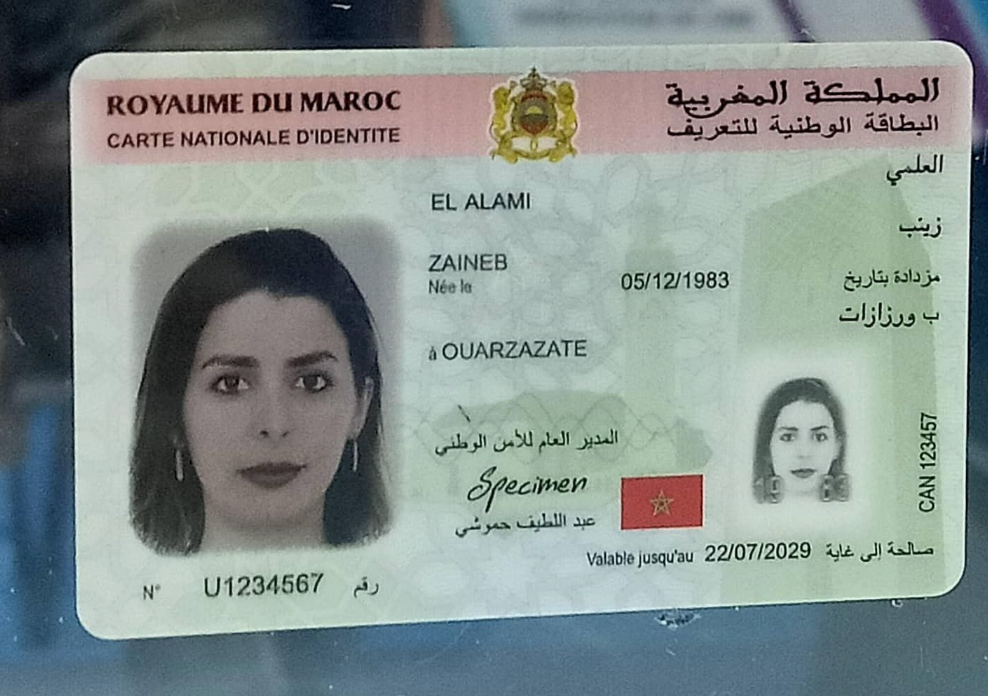A national ID is an official document issued by a government that serves as proof of a person’s identity and citizenship within a particular country. It is a crucial form of identification that enables individuals to access various government services, exercise their rights, and participate in civic activities.
The national id typically contains personal information such as the individual’s full name, date of birth, and a unique identification number. This information is essential for establishing an individual’s identity and verifying their eligibility for certain benefits and privileges.
Moreover, a national ID may also include additional details such as the individual’s photograph, biometric data (such as fingerprints or iris scans), and other relevant information that enhances the security and accuracy of the identification system.
The purpose of a national ID is to establish a standardized and reliable means of identification that can be universally recognized and accepted within the country. It helps prevent identity fraud, streamline government services, and facilitate various transactions, such as opening bank accounts or applying for official documents.
In summary, a national ID is an essential document that plays a significant role in verifying an individual’s identity and citizenship. It provides a reliable and standardized form of identification that enables individuals to access government services, exercise their rights, and participate in various activities within their country.
Benefits of a National ID

A national ID system provides numerous benefits to individuals and the government alike. One of the key advantages is improved security. With a national ID, it becomes easier to verify a person’s identity, reducing the risk of fraud and identity theft. This heightened security also extends to government services, as it allows for more accurate identification and authentication of individuals accessing these services.
Furthermore, a national ID system streamlines government services by eliminating the need for multiple identification documents. Instead of carrying around various forms of identification, individuals can simply present their national ID, making processes such as applying for government benefits or obtaining official documents more efficient.
In addition to improved security and streamlined services, a national ID system enhances voter registration. By linking voter information to the national ID database, governments can ensure accurate and up-to-date voter rolls, reducing the risk of voter fraud and ensuring fair elections.
Another significant advantage of a national ID is the reduction of identity theft. With a secure and reliable identification system in place, it becomes more challenging for individuals to impersonate others or use stolen identities for illegal activities.
Moreover, a national ID can facilitate financial transactions by providing a reliable means of identification. It allows individuals to open bank accounts, apply for loans, and engage in other financial activities more easily and securely.
Access to healthcare is also improved with a national ID system. It enables healthcare providers to accurately identify patients and access their medical records, ensuring efficient and effective healthcare delivery.
In summary, a national ID system offers a range of benefits, including enhanced security, streamlined government services, improved voter registration, reduced identity theft, facilitated financial transactions, access to healthcare, and efficient delivery of public services. It is a valuable tool that promotes efficiency, accuracy, and security in various aspects of life.
Components of a National ID
A national ID is a comprehensive document that encompasses various components to ensure accuracy, security, and reliability of the identification system. These components include:
- Biometric Data: Biometric data, such as fingerprints and iris scans, play a crucial role in verifying an individual’s identity. These unique physical characteristics are difficult to forge or replicate, making them highly reliable for identification purposes.
- Photograph: A photograph is an essential component of a national ID as it visually represents the individual. It helps in visual identification and serves as an additional layer of security.
- Personal Information: Personal information, such as name, date of birth, and address, is included in a national ID to establish the identity of the individual. This information is crucial for government and administrative purposes.
- Unique Identification Number: Each national ID is assigned a unique national id number. This number acts as a reference point and helps in distinguishing one individual from another. It aids in efficient record-keeping and prevents duplication.
By combining these components, a national ID system ensures the accuracy and reliability of identification. Biometric data provides a robust layer of security, while the photograph and personal information further validate the individual’s identity. The unique identification number serves as a unique identifier, facilitating efficient record-keeping and preventing identity duplication.
Overall, the combination of these components in a national ID enhances security, streamlines government services, and helps in reducing identity theft. It enables individuals to access various services, such as financial transactions, healthcare, and public services, with ease and efficiency.
Privacy Concerns
Privacy concerns are a significant aspect to consider when implementing a national ID system. While national IDs offer convenience and enhanced security, there is always the risk of potential misuse of personal data. It is essential to strike a balance between efficient identification and protecting individuals’ privacy rights.
One of the primary concerns is the collection and storage of personal information. National ID systems typically require individuals to provide personal details such as name, date of birth, and biometric data. This information, if not adequately protected, could be vulnerable to unauthorized access or hacking.
Another concern is the potential for surveillance and tracking. With a centralized database containing extensive personal information, there is a risk that governments or other entities could misuse this data for surveillance purposes, infringing on individuals’ privacy rights.
Additionally, there is the issue of data breaches and identity theft. The more extensive the national ID system, the higher the risk of data breaches, which can result in identity theft and financial fraud. It is crucial for governments to implement robust security measures to safeguard personal information and regularly update and monitor their systems.
Furthermore, there are concerns about the potential discrimination and exclusion that can arise from a national ID system. If not implemented carefully, certain groups or individuals may face barriers in accessing services or opportunities due to biases or errors in the identification process.
To address these privacy concerns, it is essential for governments to establish strict legal frameworks and regulations regarding data protection and privacy rights. Transparency is crucial, and individuals should have control over their personal information, including the ability to access and correct their data.
In conclusion, while national IDs provide convenience and security, it is vital to address privacy concerns to ensure the protection of individuals’ personal data. Striking a balance between efficient identification and safeguarding privacy rights is crucial for the successful implementation of a national ID system.
| Privacy Concerns | Measures to Address Concerns |
|---|---|
| Collection and storage of personal information | Implement robust security measures and data protection regulations |
| Potential for surveillance and tracking | Establish strict regulations on data access and usage |
| Data breaches and identity theft | Regularly update and monitor systems, and provide individuals with tools to protect their data |
| Potential discrimination and exclusion | Ensure fairness and non-biased identification processes, and provide avenues for dispute resolution |
Creating a National ID

The process of creating a national ID is a complex undertaking that requires careful planning, collaboration between government agencies, and the implementation of robust data management systems. To ensure the integrity and security of the identification system, it is crucial to establish legal frameworks that outline the purpose, scope, and limitations of the national ID. These legal frameworks help protect individuals’ privacy rights and ensure that personal information is handled responsibly.
Data protection is a fundamental aspect of creating a national ID. Measures must be put in place to safeguard personal information from unauthorized access, misuse, and identity theft. This involves implementing secure technologies, such as encryption and multi-factor authentication, to protect the confidentiality and integrity of the data. Regular audits and assessments should also be conducted to identify and address any vulnerabilities in the system.
Collaboration between government agencies is essential for the successful implementation of a national ID. This includes sharing information, resources, and expertise to create a comprehensive and efficient identification system. Interoperability between different government databases and systems is crucial to ensure seamless integration and streamline processes.
In summary, creating a national ID requires careful planning, collaboration, and the implementation of secure technologies. It is a complex process that involves establishing legal frameworks, ensuring data protection, and collaborating between government agencies. By following these steps, countries can develop a national ID system that enhances security, improves government services, and protects individuals’ privacy.




